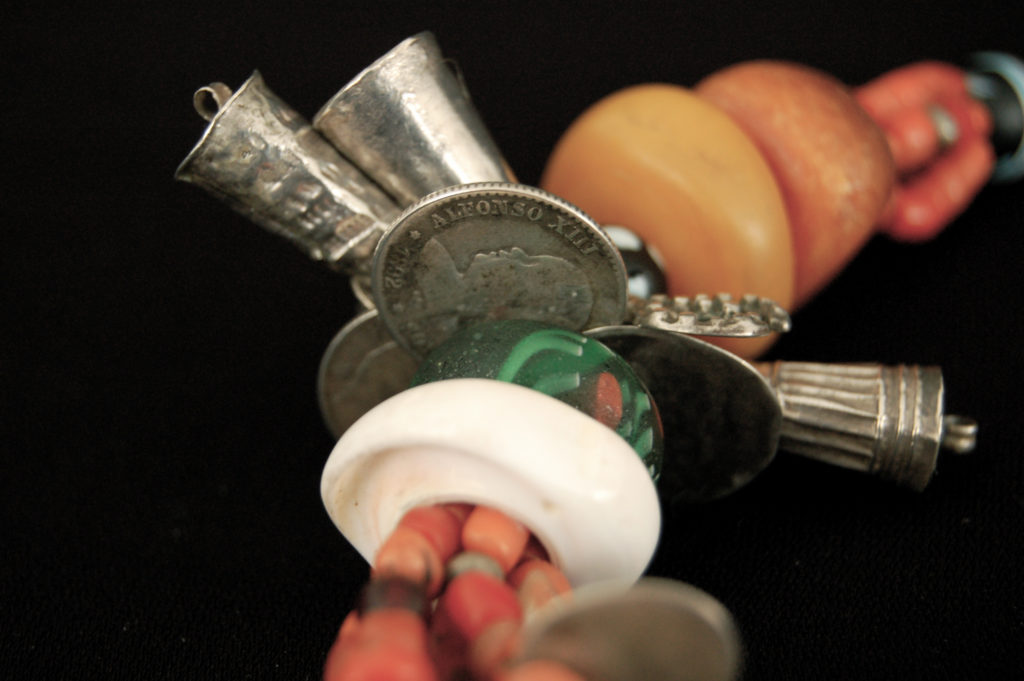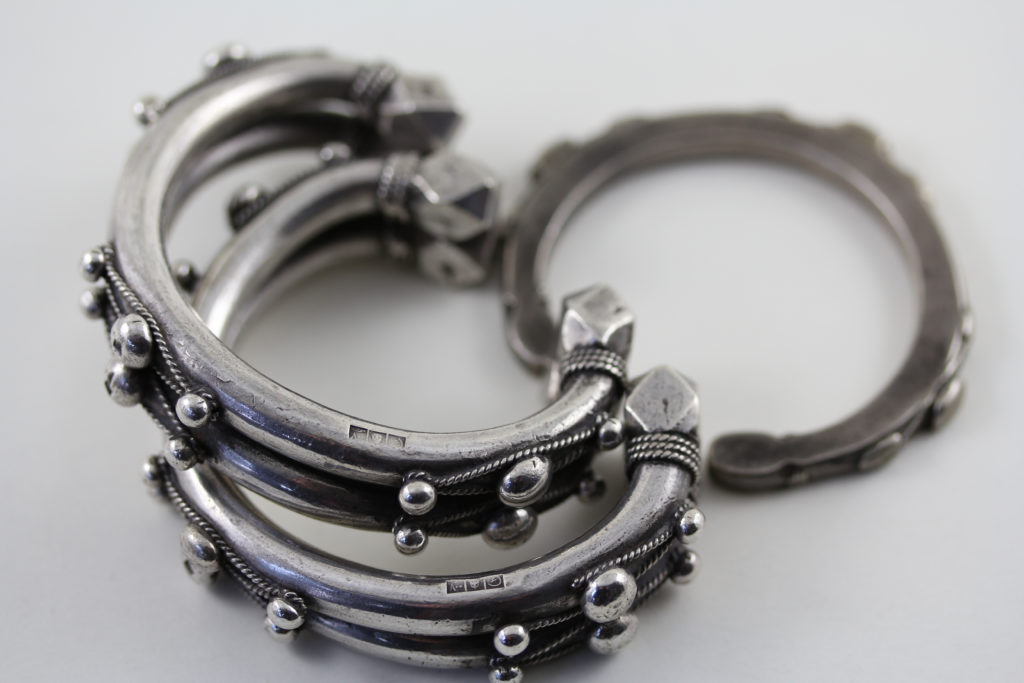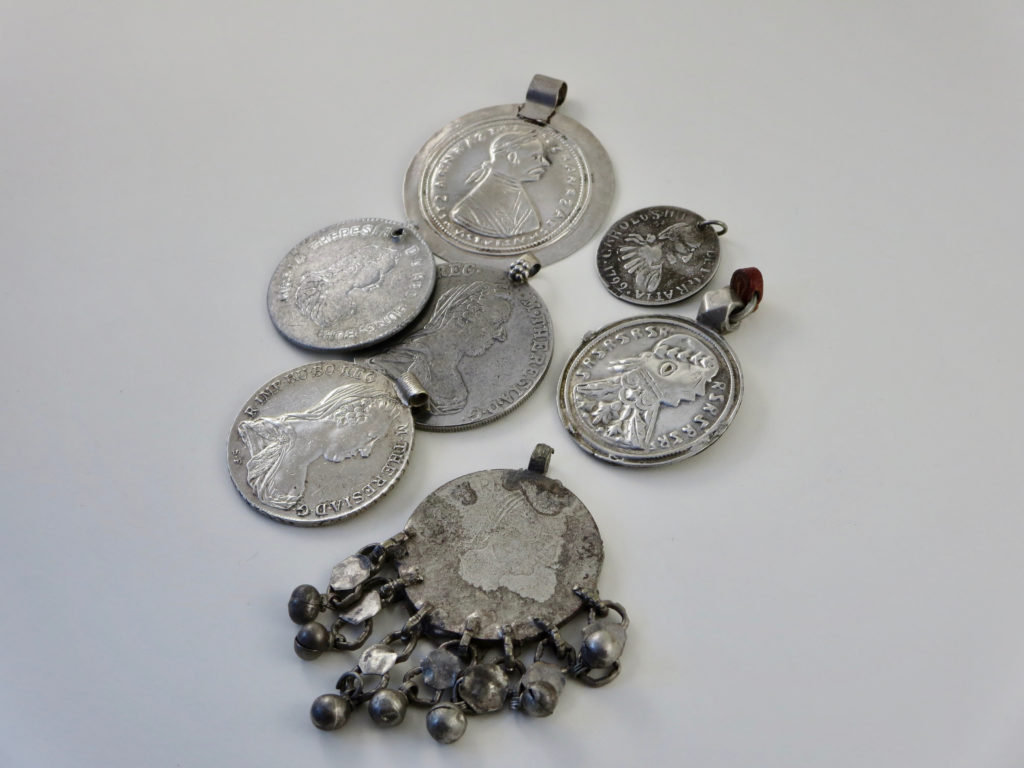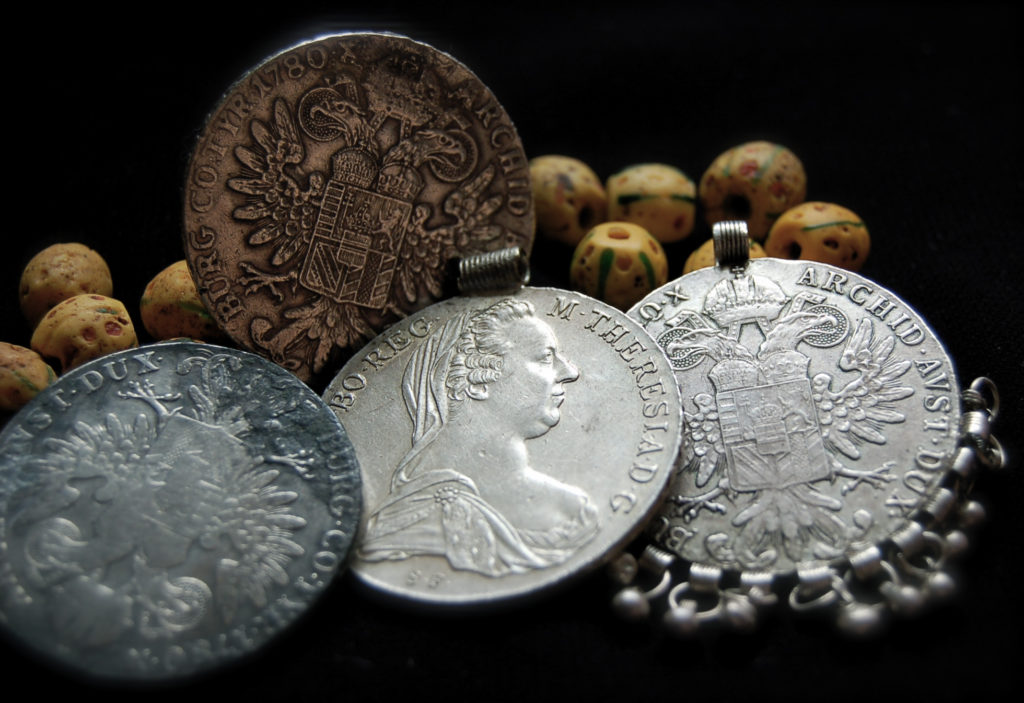Jewellery is often regarded as an extra investment and savings account. Let’s look at these financial aspects of jewellery!
 A Spanish coin used in a Moroccan necklace
A Spanish coin used in a Moroccan necklaceJingling coins
The use of coins in jewellery is widespread throughout the Middle East and beyond. Coins served as an indication of an established and guaranteed silver content.
Two coins that both possess a high silver content and are of consistently good quality, proved to be of major importance in the Middle East. They are the Spanish
columnario or pillar dollar, and the Austrian Maria Theresia Thaler. The pillar dollars found their way to the Middle East, where they were prized for their solid silver content; their use was widespread in the Ottoman Empire. In Spanish, it was called
real and this became the word of choice in Arabic to indicate official coins as
riyal. In Egypt, where the pillars were misinterpreted as cannons, the dollar was nicknamed Abu Madfa (father of guns). The MTT was the most popular coin in circulation in North Africa and the Middle East and went by many names: Abu Tayr (Father of Birds) referring to the imperial eagle; Abu Nuqta (Father of Dots) a reference to the number of pearls on the brooch of the empress; and Abu Rish (Father of Feathers) a name suggested by the eagle’s many tail feathers. All these distinctive features were used to check the authenticity of the coin, as many imitations were made.
 Silver bracelets from the south of Egypt, with hallmarks on the outside
Silver bracelets from the south of Egypt, with hallmarks on the outsideMakers’ marks
Jewellery traditionally did not carry hallmarks; the region’s jewellery tradition predates their use, as well as modern state boundaries. As each piece of jewellery was individually ordered from a silversmith, the amount of silver to be used was carefully discussed, weighed and paid for. To establish the correct amount of silver, the material was balanced against a known amount of silver, for example a set of coins such as the Maria Theresia Thaler.
At around the beginning of the twentieth century, an official hallmarking system was implemented by Western colonizing nations. For a very long time, existing pieces of jewellery were marked only when they were sold; their exact value only needed to be established at the moment of sale. To illustrate its value, an item of jewellery usually displayed its hallmark on the outside, where it would be most visible. There also are many examples of silversmiths signing their work, such as the Bawsani family in Yemen, various masters in Palestine and masters Gab-Gab and al-Mekkawy in Egypt.
 Imitation coins used as pendants in jewellery
Imitation coins used as pendants in jewelleryFake or real?
But what to do when you could not afford solid silver or gold jewellery? Or what to do when you had a stack of bracelets but had to sell them to cover expenses? The answer is replica jewellery, imitating traditional silver jewellery with a cheaper metal that was highly polished or sometimes even silver-plated. The replicas were so good that the difference between the originals and their cheaper counterparts could often only be discerned on close examination.
In Egypt, one particular company thrived on this demand for gold-plated replicas. The icon of their brand name ‘al-Gamal’, the camel, was stamped into the jewellery; at a distance, this resembled the official gold hallmark and added to the illusion of authenticity. Replicas also came in useful when a woman wanted to buy something she knew her husband would not approve of and would not give her money for; she would exchange her original jewels for replicas without her husband even noticing.
 Maria Theresia Thalers worked into pendants
Maria Theresia Thalers worked into pendantsWhere can I read more?
There are many books about jewellery. A few suggestions to enjoy about the financial aspects of jewellery are:
Desert Silver, by myself, includes a chapter on the economy in jewellery (on which this blog post is based)
Tales of a Thaler, in:
Saudi Aramco World Vol. 54 no. 1, by H. Harrigan, is a short read about the thaler in the Middle East
Silver Legend: the story of the Maria Theresa Thaler, by Clara Semple, is a wonderful book about this famous coin
*Feature image: A Maria Theresia Thaler on a Palestinian iznaq or chin-chain





 A Spanish coin used in a Moroccan necklace
A Spanish coin used in a Moroccan necklace Silver bracelets from the south of Egypt, with hallmarks on the outside
Silver bracelets from the south of Egypt, with hallmarks on the outside Imitation coins used as pendants in jewellery
Imitation coins used as pendants in jewellery Maria Theresia Thalers worked into pendants
Maria Theresia Thalers worked into pendants